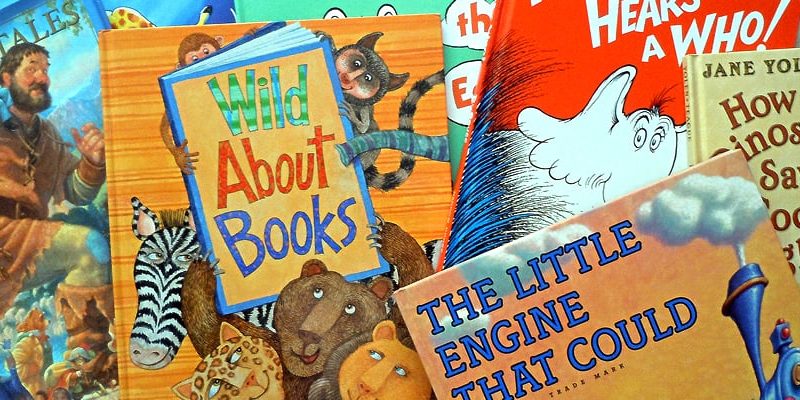The Power of Reading in Raising a Bilingual Child
When a bilingual child attends a Japanese school, nurturing the English side of the child’s language ability requires a whole range of efforts. In 16 Tips for Raising a Bilingual Child in Japan and 12 More Tips for Raising a Bilingual Child in Japan, I offered a variety of ideas to help address this challenge.
In this article, though, my focus is solely on reading, the area that I feel has had the most powerful impact on the language development of my children and the children I have worked with over the years as a teacher of bilingual kids.
Reading aloud
It seems hard to believe that something so simple, so pleasurable, could have as much influence on language development as the practice of reading aloud, and yet all my experience as a parent and teacher—as well as all the research I’ve seen on the subject (see The Read-Aloud Handbook by Jim Trelease and The Power of Reading
by Stephen Krashen for persuasive proof)—point to the enormous impact of this humble activity.
It’s honestly hard for me to overstate the importance of reading aloud—for all children—but it’s particularly vital when it comes to nurturing the minority language of a bilingual child. This means reading aloud every day, from day one, with the newborn on her back and the parent cuddled close with a stack of suitable books. You needn’t—and shouldn’t—wait until the child is any older. Begin right from birth and continue reading just as long as you possibly can, even after the child has begun reading on her own.
If you make reading aloud the bedrock of your efforts—at least 15 minutes a day, day in and day out—this routine will not only fuel the growth of the target language, the child will come to associate books and reading with the warmth and pleasure of your time together. Reading aloud—picture books, poetry, chapter books, novels, and nonfiction, too—has long formed the core of my efforts to promote language development and a love of literacy.
Building a home library
Of course, in order to maintain this regular read-aloud practice, the other challenge—in addition to your firm commitment—involves obtaining a steady supply of suitable children’s books. In my experience, this is the other obstacle that parents must make a special effort to overcome.<
No matter how tight your budget, building a home library of books in English should at least be a small part of it. In the long run, the money you spend on books will be a modest investment with a substantial payoff: your child’s English ability, and interest in reading, will be much stronger. It’s a question of priority, in the same vein as making the time to read each day: if you have to cut back on some other aspect of your current lifestyle in order to free up funds for books, it’s an adjustment worth making, in my opinion.
I also suggest a practice of giving books as gifts for birthdays, Christmas, and other special days. Giving books as gifts—and encouraging others to do the same for your kids—is another way to add to your home library while also elevating books as “special things.”
At the same time you’re building your home library, the local library may be another source of children’s books in English. If such books are available, head there regularly with your child. You could also extend the effort to exchange the books you own with similar families in your area.
It’s vital, as well, that you seek out books which closely fit your child’s age and interests. After all, if you find the time, but not the right books, your read-aloud effort won’t be as effective and enjoyable as it should be…and could even be abandoned. So you must be willing to invest additional time in searching for books that suit your child, which can easily be done online. (A wealth of recommended titles can also be found in The Read-Aloud Handbook and How to Get Your Child to Love Reading
.)
Subscribing to one or more children’s magazines that your child would enjoy receiving regularly is another effective way to enrich your home with appropriate material.
Reading with your children
Once your child has begun to read in English, you should read with them daily, taking turns, page by page—this “shared reading” is in addition to your ongoing read-aloud time. Because the child’s listening comprehension will be considerably higher than her reading ability, up until an older age, you’ll now be working with two different kinds of books: easier books for shared reading; harder books for reading aloud.
When your child is about 3 or 4, you can add “chapter books” to your read-aloud routine (while continuing to read picture books and poetry). This is an important development, because chapter books—those that come in a series of 5 or 10 or even 20 or more books and feature familiar characters and plot lines—are a wonderful way to help hook a child on books and literacy. (See How to Get Your Child Hooked on Books for a list of such books.)
For shared reading, the early books will consist of simple picture books, which can then slowly increase in difficulty as proficiency grows. Eventually, when the child is ready, you can “graduate” to suitable chapter books—particularly the chapter book series that you’ve already read aloud. Since the child has already heard these stories once (or even several times—it’s fine to reread favorite books), this should help ease her move into chapter books.
Children reading on their own
Although reading aloud should be maintained throughout childhood (both fiction and nonfiction at increasingly sophisticated levels), over time the amount of shared reading can decrease as the child reads more on her own.
All children are different, of course, and some will eagerly read by themselves. Others, however, are less inclined to pick up a book, particularly when there are already heavy demands on their time in connection with Japanese school.
In order to increase the odds that your child will read independently in English, there are several strategies you might try:
1. Make use of captive reading.
What I call “captive reading” is the idea of posting reading material in a location in the home (like the bathroom), where the child’s eyes will be automatically drawn to it. In fact, the use of captive reading can start when the child is just beginning to read by putting a small whiteboard in the bathroom and writing simple messages and riddles on it. As the child’s reading proficiency grows, you can eventually post short fiction and nonfiction texts, and even write your own “serial stories” with the child as the main character. (See Turn Your Kids into Eager Readers with This Fun, Simple Strategy.)
2. Match books with interests.
Whatever interests your child exhibits, or concerns they may express, you can likely match that interest or concern with a suitable English book. If you’re proactive about this, and locate appealing titles, the child will be far more likely to spend time reading on her own.
3. Use reasonable incentives.
There are various views when it comes to “rewards,” but I’ve found that offering reasonable incentives for reading in English—like a small prize or treat—can help heighten enthusiasm and maintain motivation.
Put reading at the heart of your efforts
Put reading at the very heart of your daily efforts and you’ll not only be more effective at nurturing your child’s English ability, you’ll also be establishing an early love for books and literacy that will serve your child well throughout her lifetime.
Adam Beck is the blogger of Bilingual Monkeys, a site of “ideas and inspiration for raising bilingual kids (without going bananas).” A former teacher at Hiroshima International School, and now a writer for the Hiroshima Peace Media Center, Adam is the father of two bilingual children.





